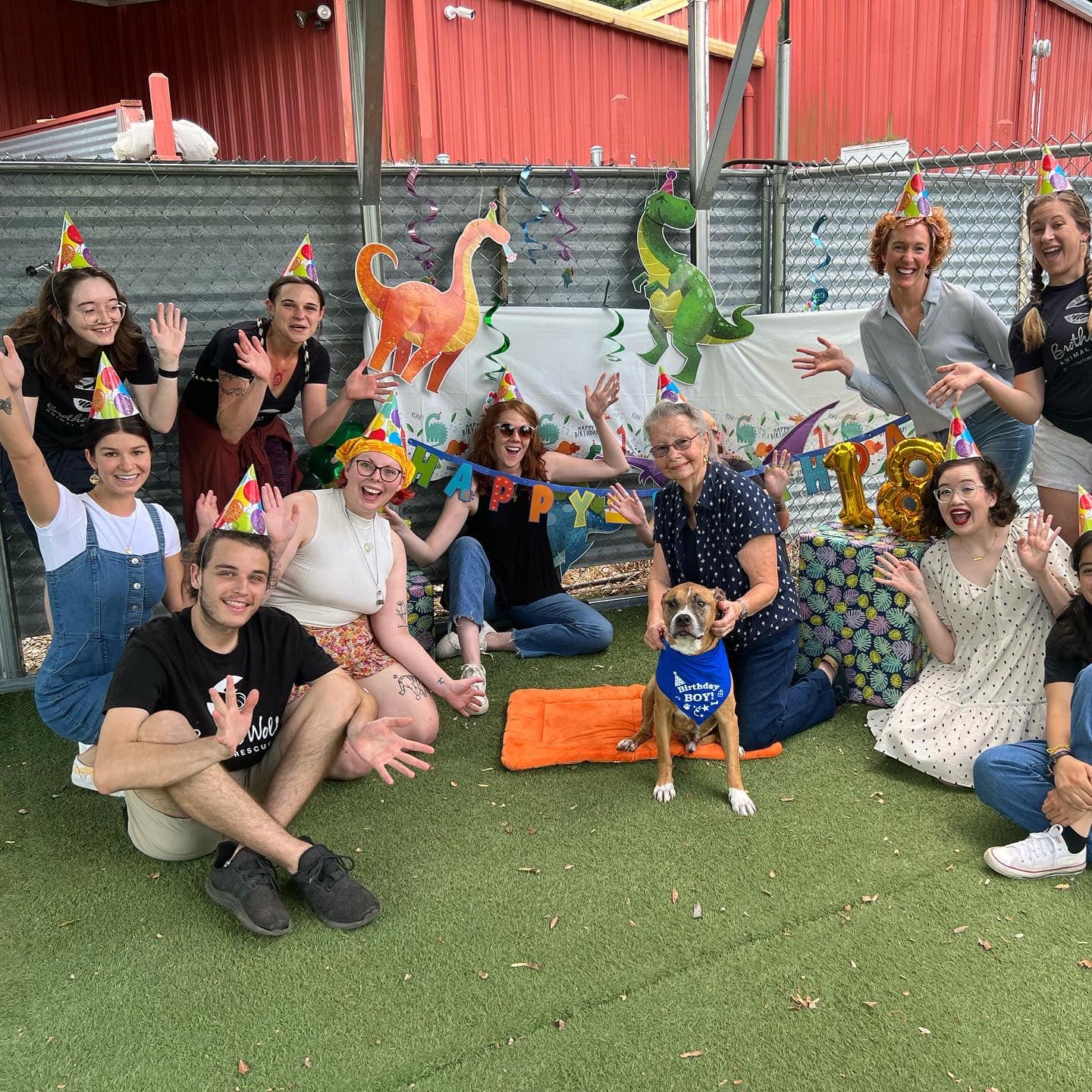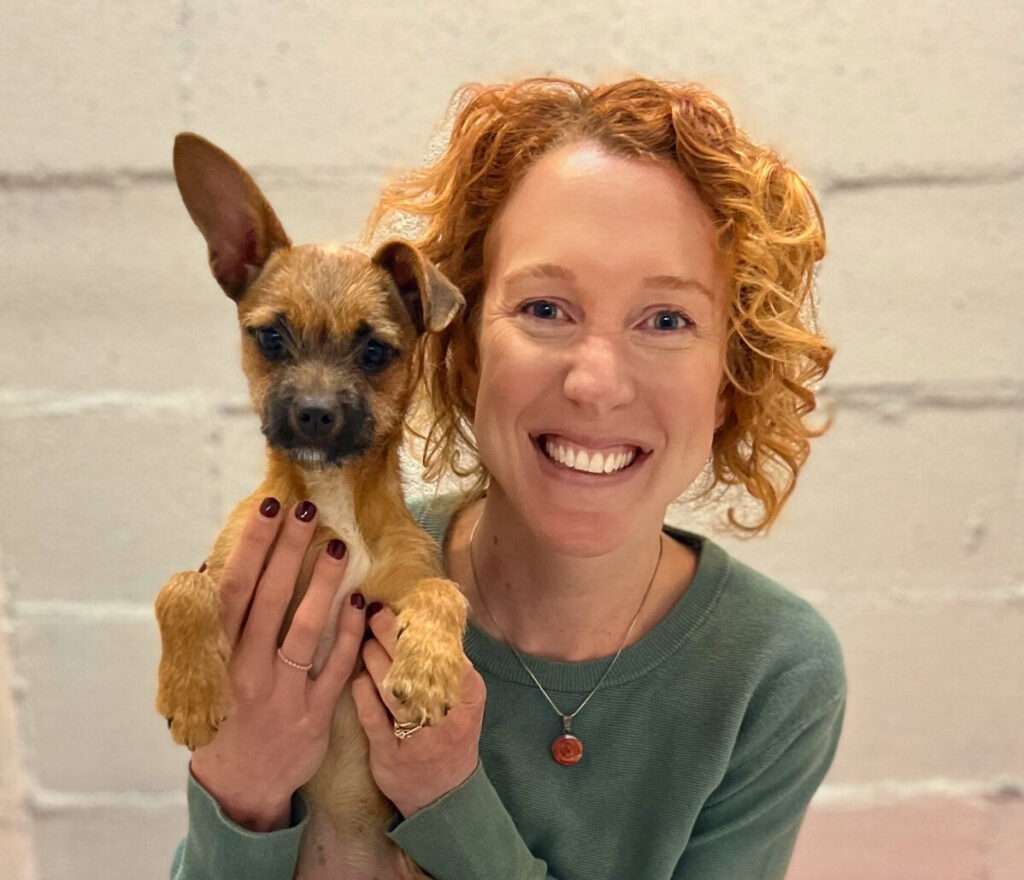News, ideas & inspiration from industry leaders

A Place Where All Living Beings Thrive

In 2019, Leah Craig Chumbley was tasked with turning around an organization facing mission creep, a million-dollar funding gap, and a mostly unhappy workforce. Here’s her story.
Every day, animal welfare professionals interact with animals from different backgrounds and with varying needs, and we work to make them feel healthy, safe, and happy. As an industry, we create best practices in shelter medicine, design, and management that take into account the physical and emotional needs of the animal. We take steps to decrease their stress and increase their feelings of comfort and safety.
We do this because we care deeply, and because it works. The cat picked up as a stray who acts more like a raccoon than a housecat until they have time to settle in, to receive care, and to have positive human interactions…. The scared dog shaking in the corner of his kennel on Day One, only to be seen days later bounding happily through the play yard, after staff helped him feel safe and confident….
Living beings thrive in environments where their needs are being met. Animal welfare professionals know this deeply.
In an industry where these things are top of mind, it’s perplexing to see some organizations spend so much time attending to the wellbeing of animals, and so little time attending to the wellbeing of staff. This is something that has always stood out to me, so in 2019, when I was given the opportunity as ED to rewrite the script at Brother Wolf Animal Rescue in Asheville, NC, the wellbeing of the animals and the people who care for them was top of mind.
It wasn’t easy. There was a million-dollar funding gap, a failed capital campaign, mission creep, a shelter operating far outside of best practices, and a mostly unhappy and frustrated workforce. The leadership team had to take immediate steps to stabilize the organization, knowing that addressing the wellbeing of staff was key every step along the way—and that budget and program cuts necessitated the laying off of more than half of the staff. Everyone on the leadership team had worked at organizations whose policies and practices did not help staff thrive. Many have worked in animal welfare for years, and have experienced being bled dry and replaced. We wanted to do it differently.
Our first goals with staff: listen to feedback, give them the tools they need to do their jobs, be transparent, and honor their days off. This all needed to be achieved within an environment that, at the time, was full of chaos and mistrust.
Without a concrete roadmap to follow for creating a workplace where employees and programs thrive (and with limited resources available to do so), we had to get creative. Below are some of the practices we put into place:
- The core values of adaptability, accountability, caring and collaboration are woven into all we do, and are part of regular discussions, including interviews and staff reviews.
- Welcome emails are sent to all staff during a new employee’s first week, including a photo and some fun info about them for conversation starters, so that existing employees are prepped to make the new employee feel welcomed. Employee start dates are put on everyone’s calendar.
- As ED, I meet with new hires within their first 90 days to discuss the history of animal welfare, the landscape for animals in our state, why we choose to run programs the way we do, our values and business model, how we prioritize mental health in this highly emotional work, and the role that everyone plays in making the organization successful.
- Employee feedback is taken seriously, and many changes have been implemented due to employee feedback. One of the most impactful ways to get valuable employee feedback is through stay interviews, which are conducted annually with each staff member.
- Management is expected to model work-life balance, boundaries, positivity, high levels of customer service, transparency, care, cross-department communication, and continuous improvement.
- Managers routinely send emails to staff expressing joy and gratitude about things that have taken place or been achieved, including happy adoption updates or supportive messages from donors.
- Staff is kept up-to-date about changes within the organization that may impact them, via an email newsletter. This monthly communication includes kudos, administrative updates, upcoming training information, and open staff positions.
- Work anniversary emails are sent to staff, comprised of anonymous, positive feedback from their colleagues. We regularly hear that they’re the most touching emails they’ve ever received.
- Opportunities for staff to get together for fun and connection outside of work.
- Quarterly team support sessions with a licensed therapist. The theme for 2023 is nonviolent communication; 2022’s theme was resilience. We also have an employee assistance program that provides free counseling and job coaching.
- Growing staff members’ skill sets is a priority, as we often promote from within.
- Thorough exit interviews are conducted and shared with leadership.
- Wages and benefits are continually addressed at the board level, and board members are supportive of using resources to bolster staff satisfaction, engagement, and retention.
More than three years later, I can report that this work has led to positive results in every area of Brother Wolf Animal Rescue’s operations: Staff turnover has been cut in half, the number of donors giving $1,000+ gifts has increased by over 350%, and the number of total donors giving to the organization has increased by 70%. Daily operations are now in line with animal welfare best practices, and our reputation as a good employer brings strong candidates our way. Volunteers and adopters have overwhelmingly positive feedback about their interactions with the organization.
We also recently participated in UNC-Charlotte’s Shelter Employee Engagement & Development Survey (SeeDs), and the results of this assessment also reflect the impact of our work. I am proud to say we scored in the top handful of results in North America within the last 20 years. The assessment includes 55 items that evaluate a wide range of organization aspects, from peer support and euthanasia practices to leadership and pay and benefits. Of the 52 categories that have research-established industry norms, we scored stronger than those norms in 46 categories.
SeeDS recently added a new question to their survey to deterimine how much of a helping culture there is within an organization. Ninety-six percent of Brother Wolf staff members indicated that people in this organization help each other. You can’t fake that, and that feeling of care, comradery and in-it-together nature positively permeates into what we experience as staff members each day. Animal welfare is always going to be a challenging field to work in. By caring for each other, we can do this work better and we can stay in it longer, and that’s what the animals need from us.
To learn more ways to engage your employees—and the science behind what’s working—join us for the September 12 Roundtable, Help Your Team Thrive.


